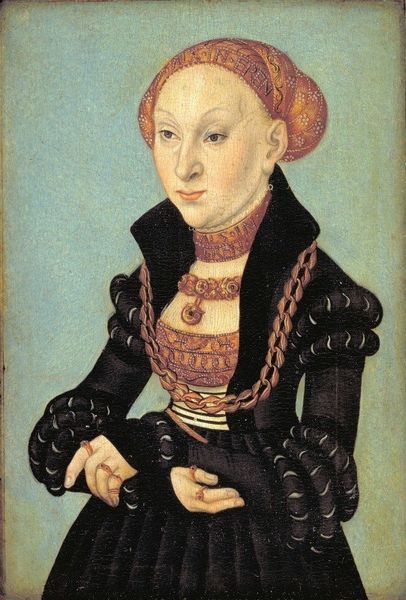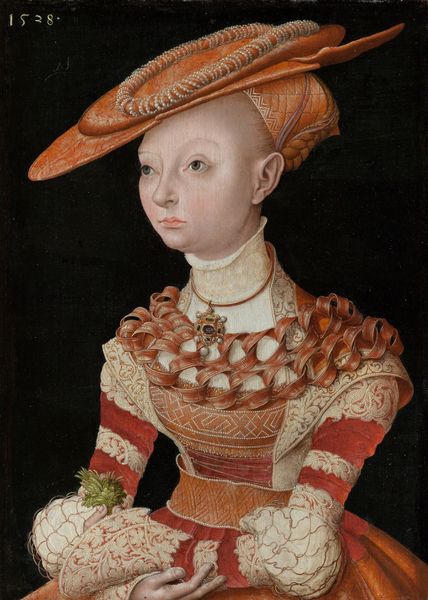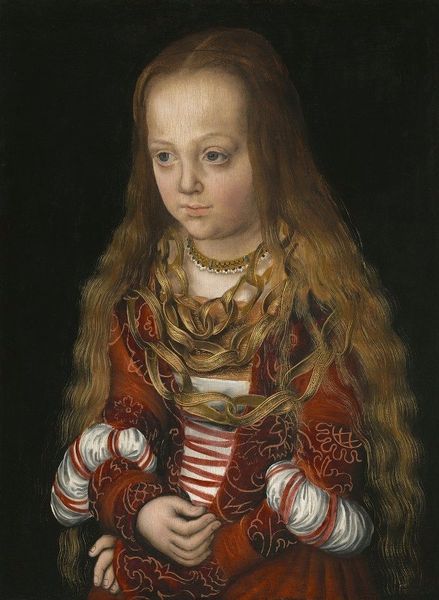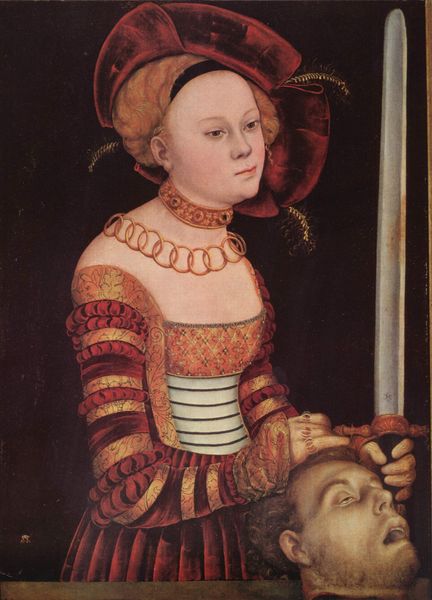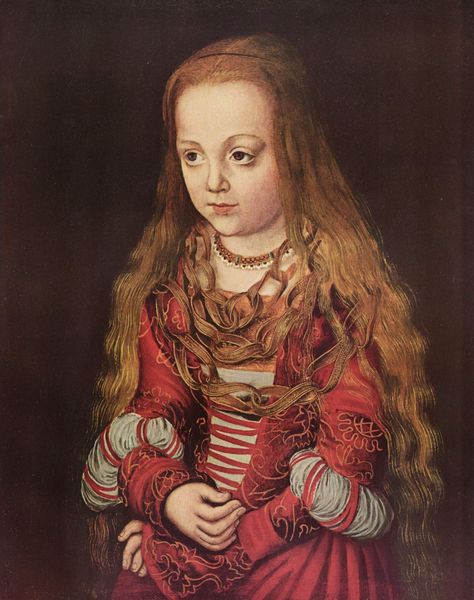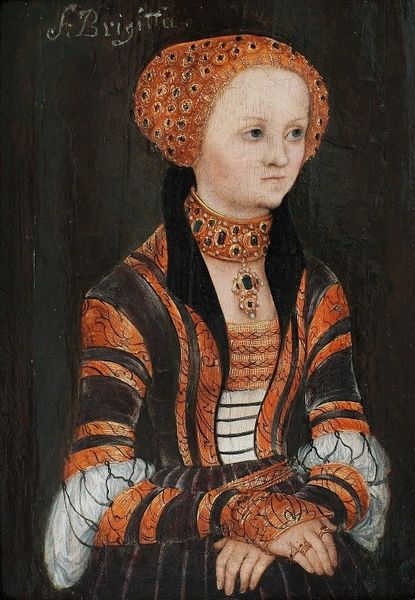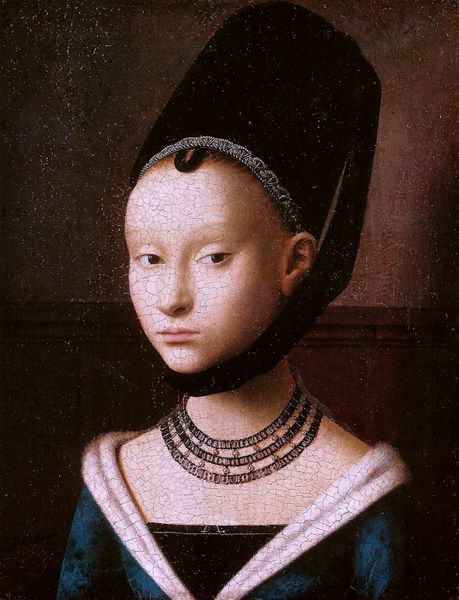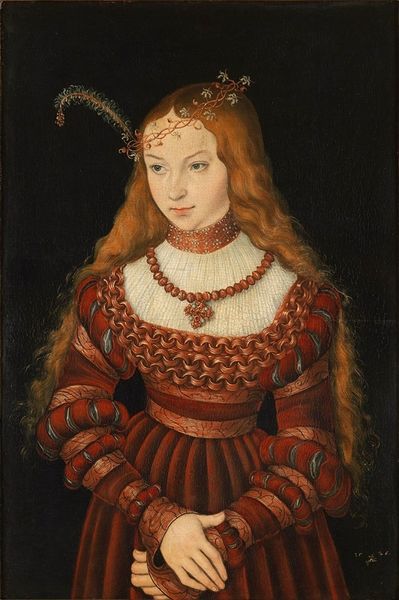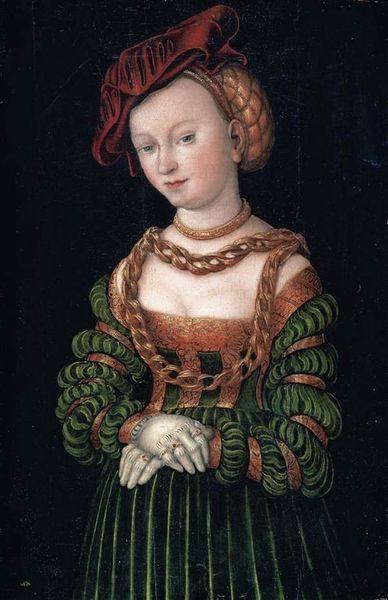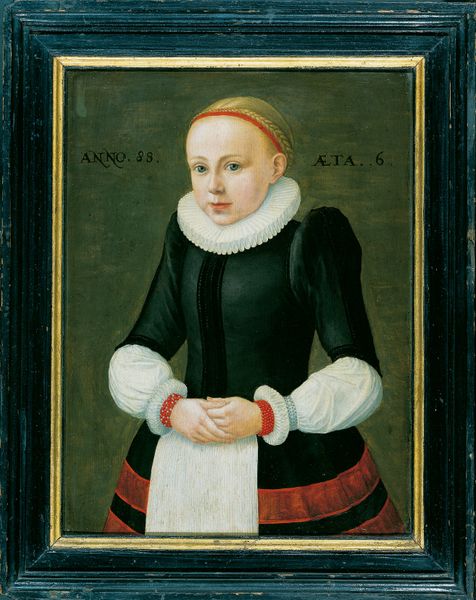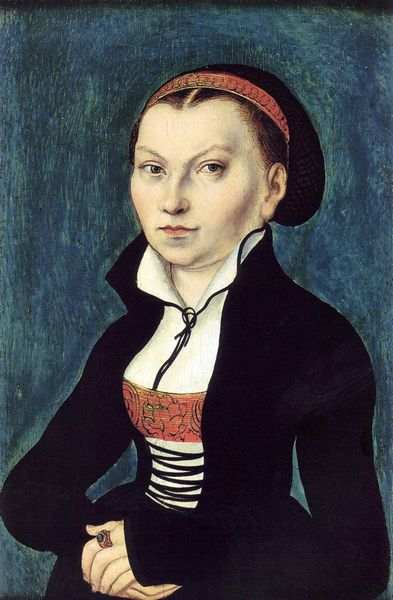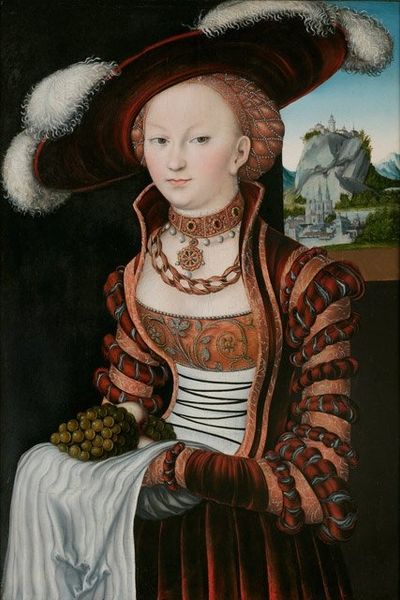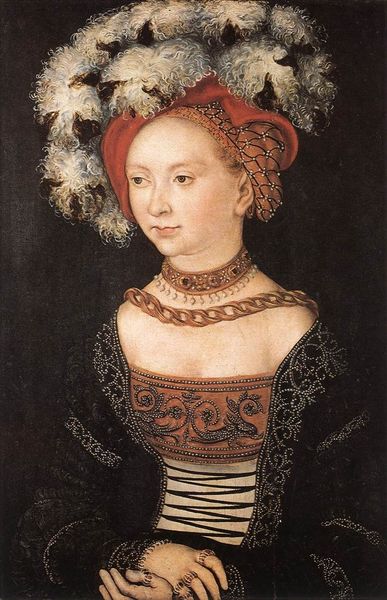
oil-paint
#
portrait
#
oil-paint
#
11_renaissance
#
oil painting
#
genre-painting
#
northern-renaissance
Copyright: Public Domain: Artvee
Curator: Look at this intriguing portrait— "Portrait of Christiane of Eulenau" painted in 1534 by Lucas Cranach the Elder. The subject is positioned against a striking red background. Editor: My first thought is how intense her gaze is. She definitely holds your attention, but there is something both assertive and vulnerable about her demeanor. It makes me wonder what constraints and freedoms existed for women like her at that time. Curator: Absolutely. Cranach, known for his role in the Reformation and his close ties to the Saxon court, presents Christiane with specific attributes designed to convey social status. Notice the ornate details of her clothing, the layers of gold, and jewels? These signifiers communicated identity within her social environment. How do these details speak to you? Editor: They illustrate power, but also restriction. The rigid neckline, the layers of fabric – there's an almost claustrophobic quality that feels representative of the limited roles women could occupy. We see that wealth and privilege weren’t synonymous with autonomy, and the image presents the nuances that the Northern Renaissance explored regarding social roles. I wonder, for example, if this type of clothing affected her breathing, her movements… Curator: That's insightful. Costume in portraiture served a dual purpose: representation of personal status as well as aspirations of the subject within the rigid structure of court society. In Cranach's oeuvre, portraiture like this existed alongside his celebrated, eroticized depictions of classical figures, or his active involvement in creating imagery for the Reformation, especially around women, obedience, and societal order. Editor: Exactly. Looking at this portrait, knowing his other work and the turbulent historical context, it strikes me as more than just a likeness. It's a carefully constructed statement about class, gender, and perhaps even veiled rebellion. Who was Christiane beyond her portrait? What power did she actually wield? That red background suddenly becomes quite potent, charged with all these questions. Curator: Precisely, the artwork and the artist force a contemporary viewer to consider Christiane's broader social position. It highlights how women navigated a patriarchal society while, simultaneously, it asks us to question if anything has changed. Editor: It makes you consider the ongoing visual economy where female subjects are objectified, and reminds us to critically examine power dynamics, both past and present. Curator: Agreed. A valuable discussion spurred from examining a singular work from centuries ago!
Comments
No comments
Be the first to comment and join the conversation on the ultimate creative platform.
